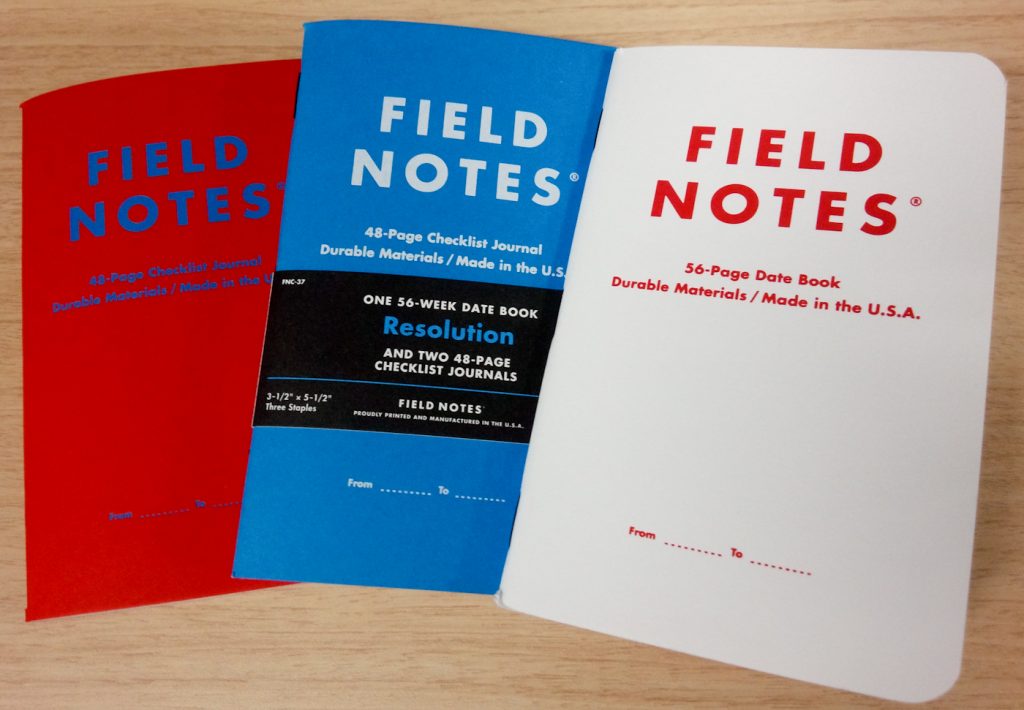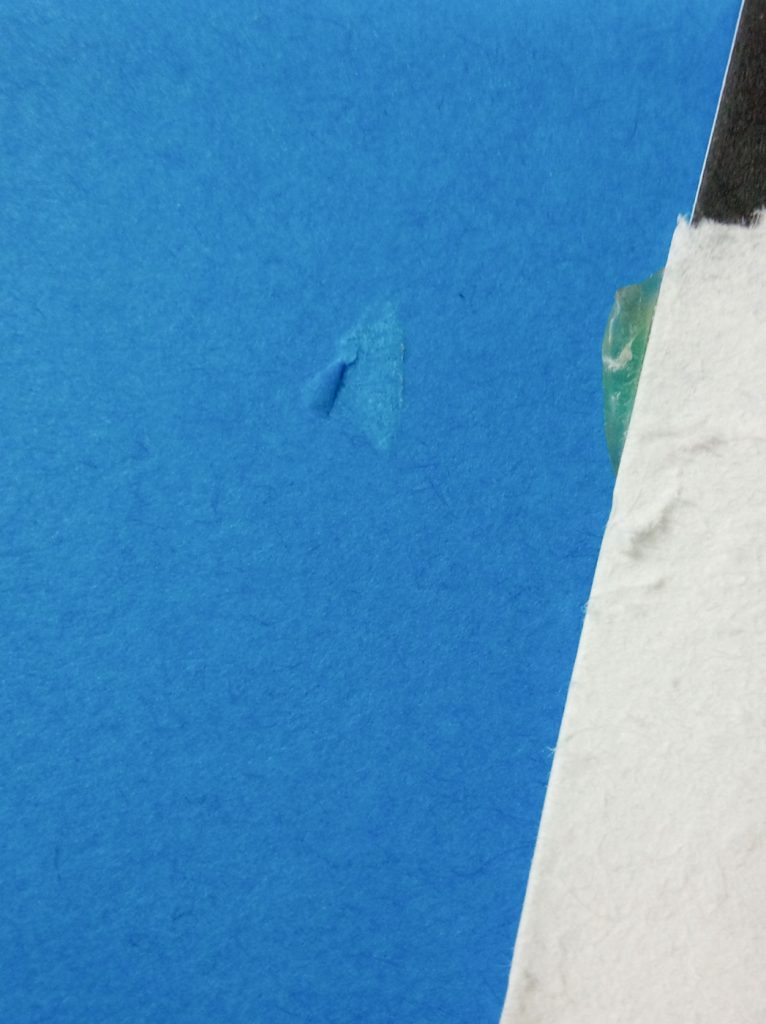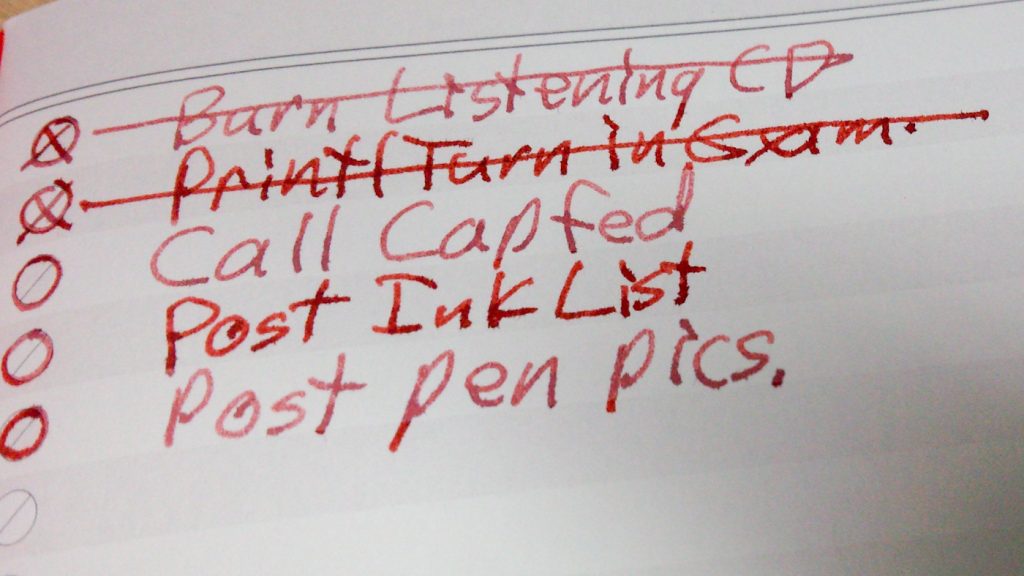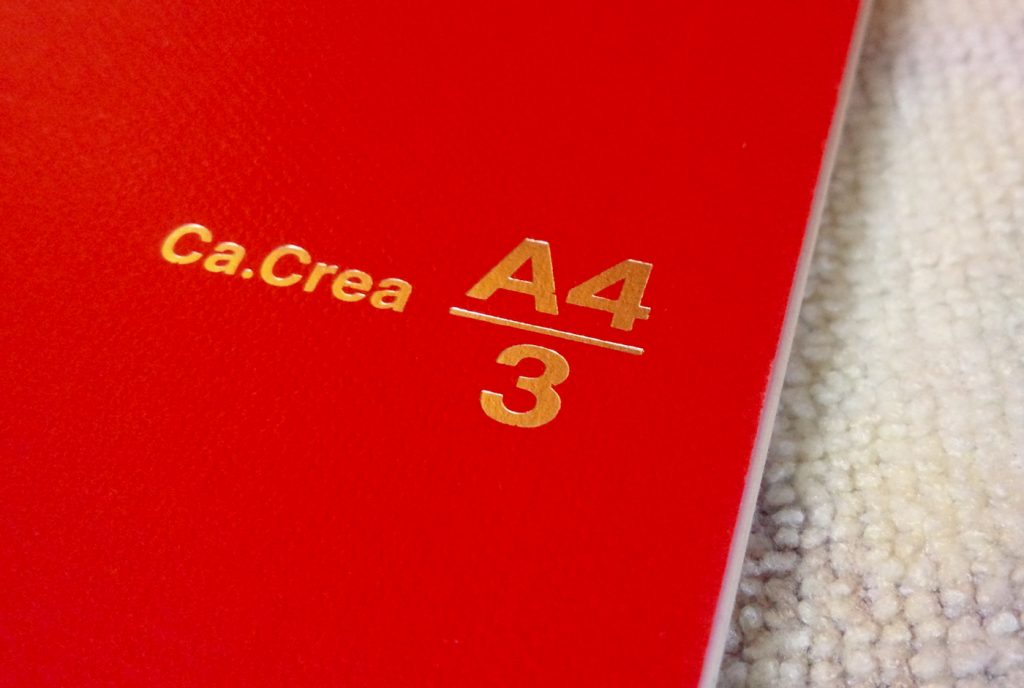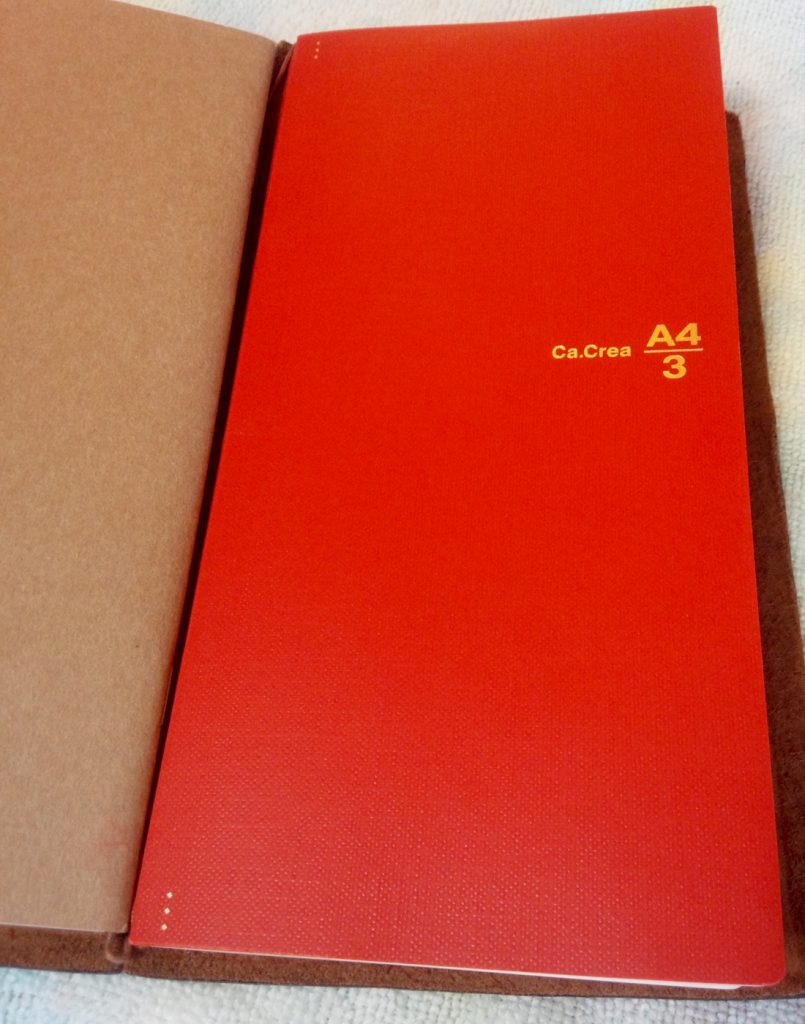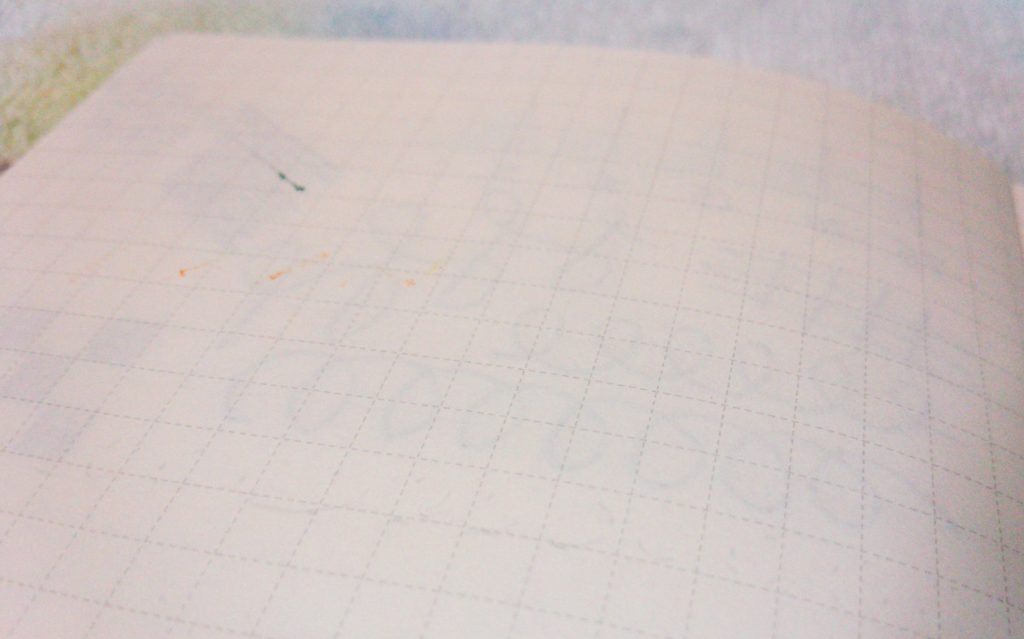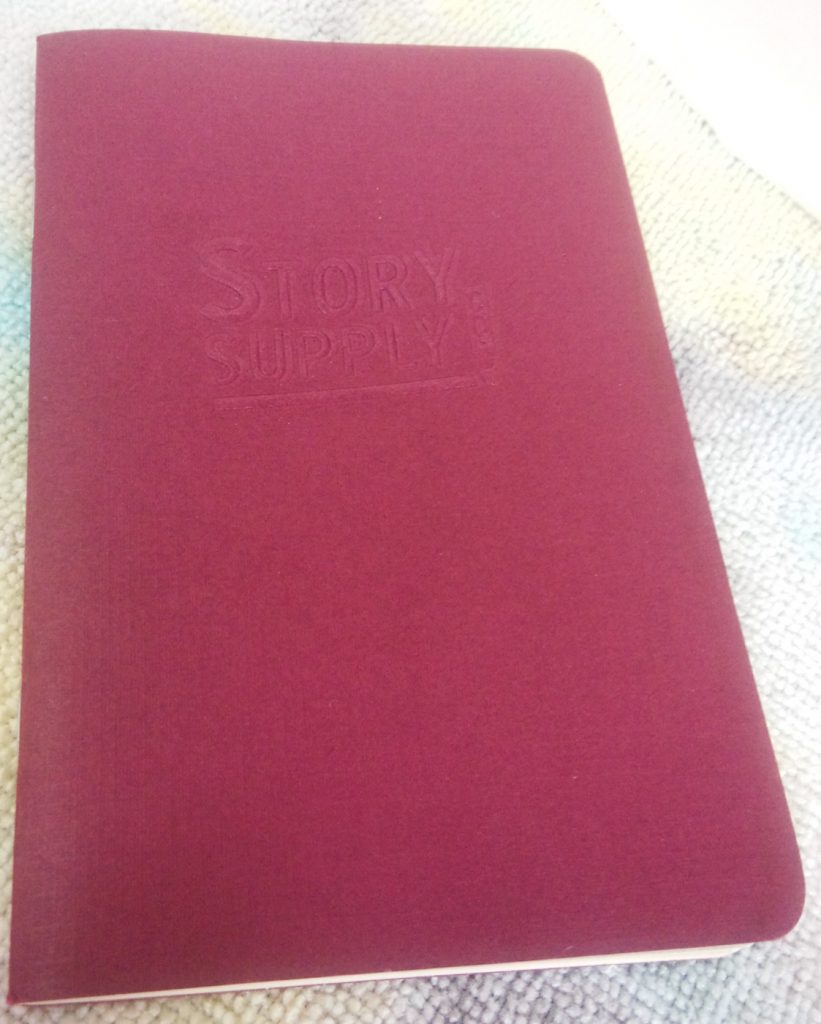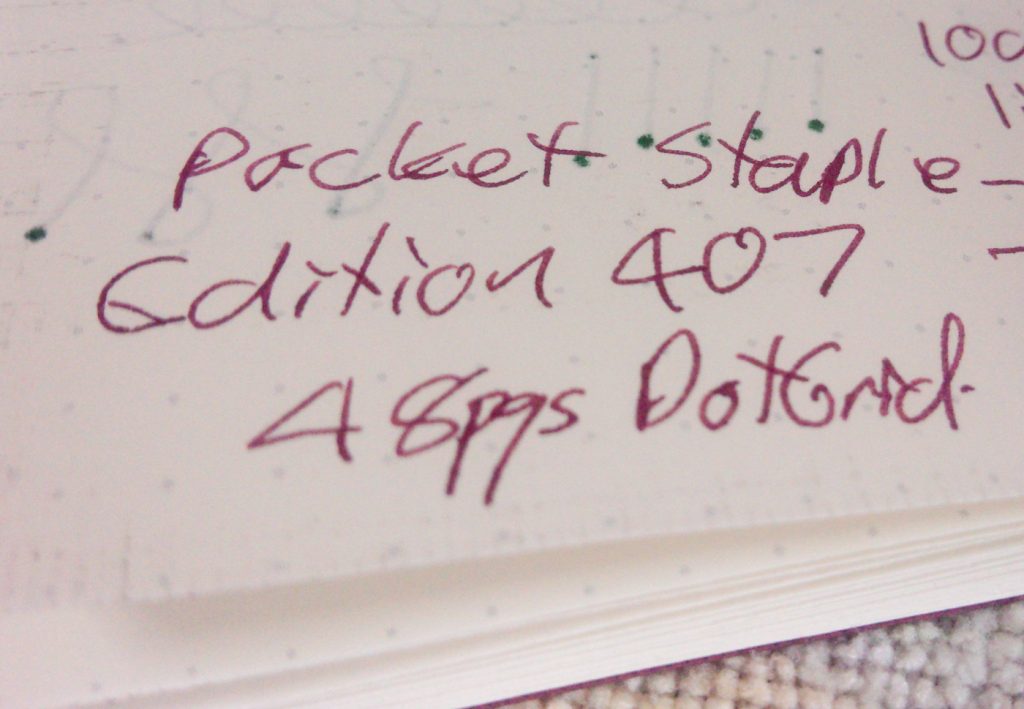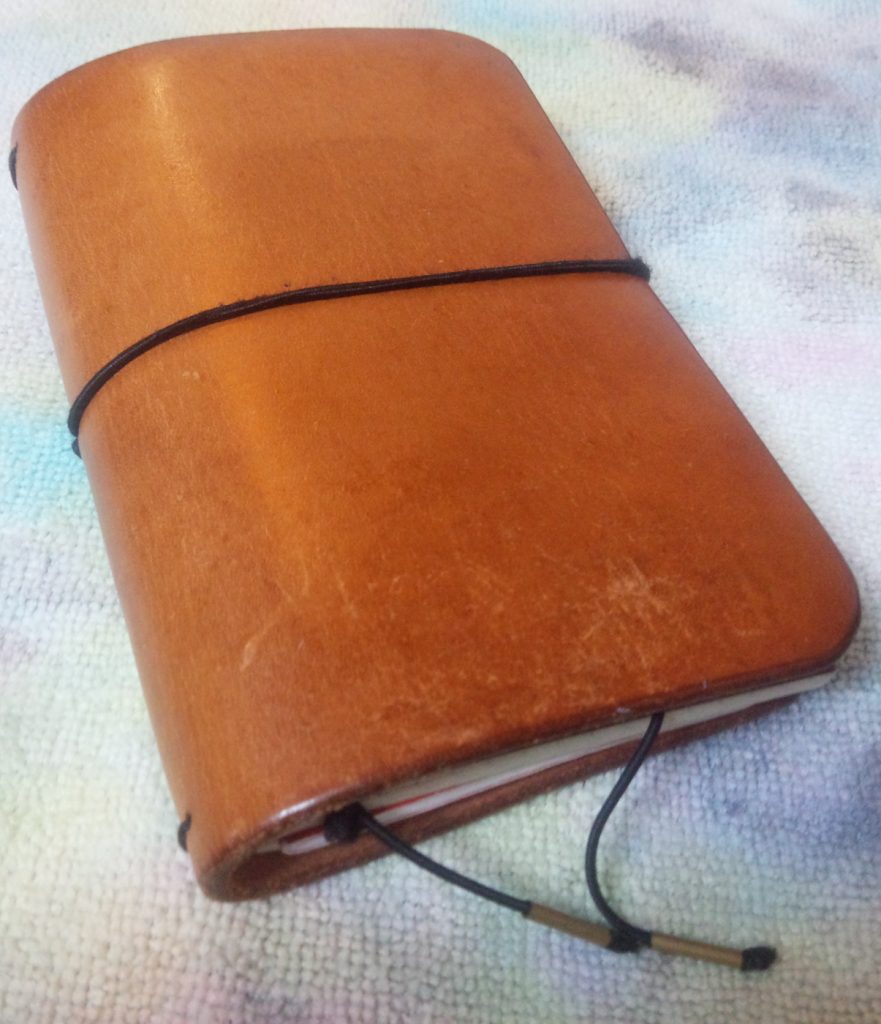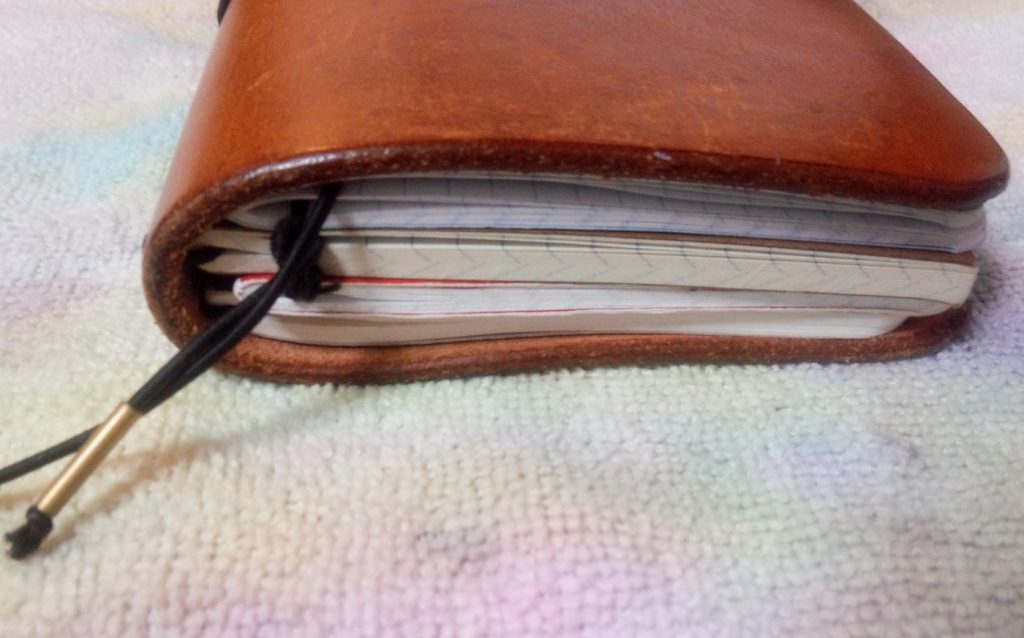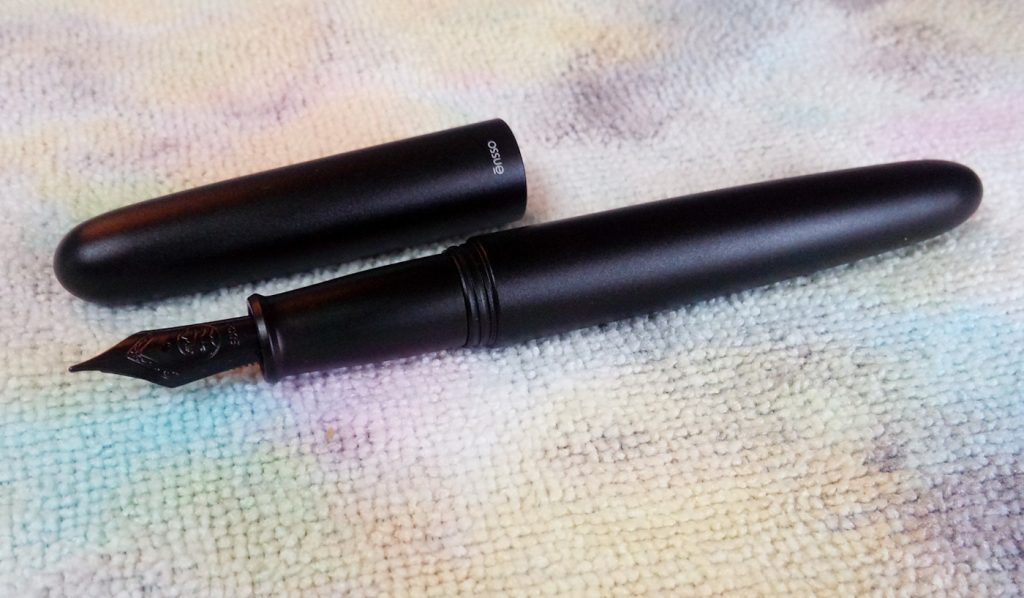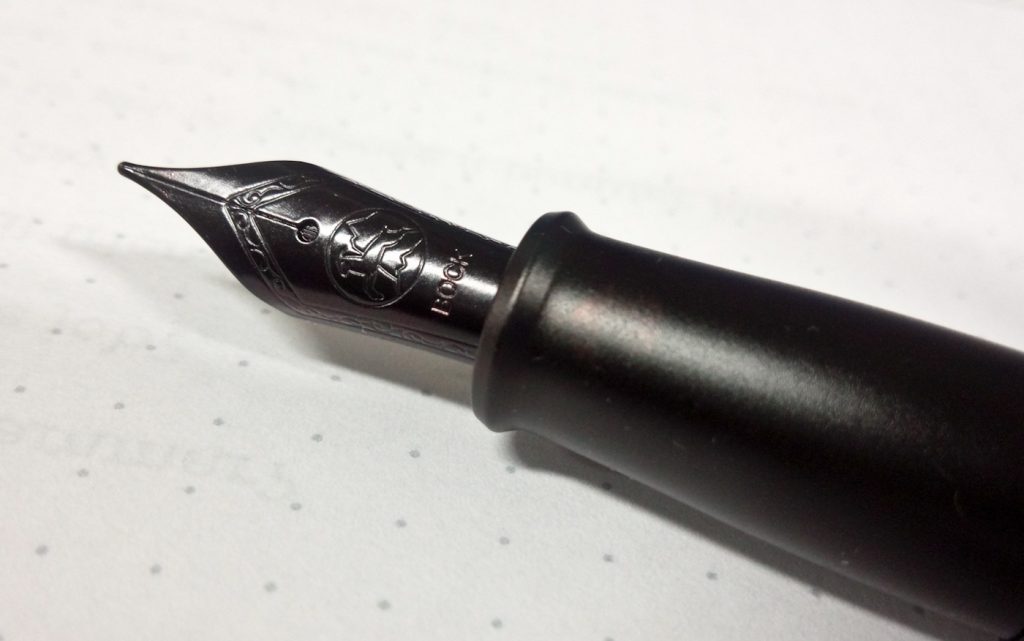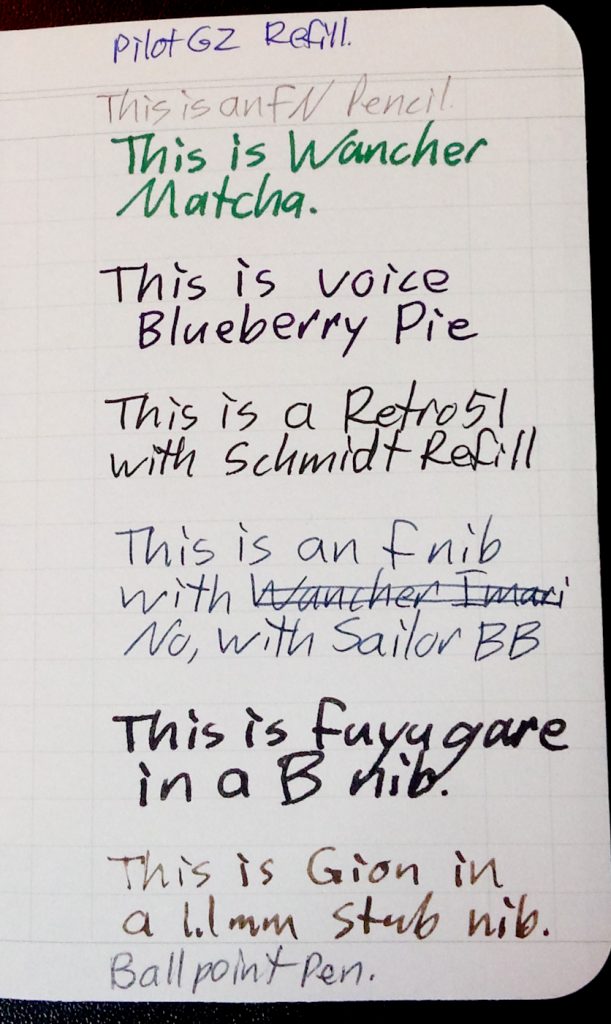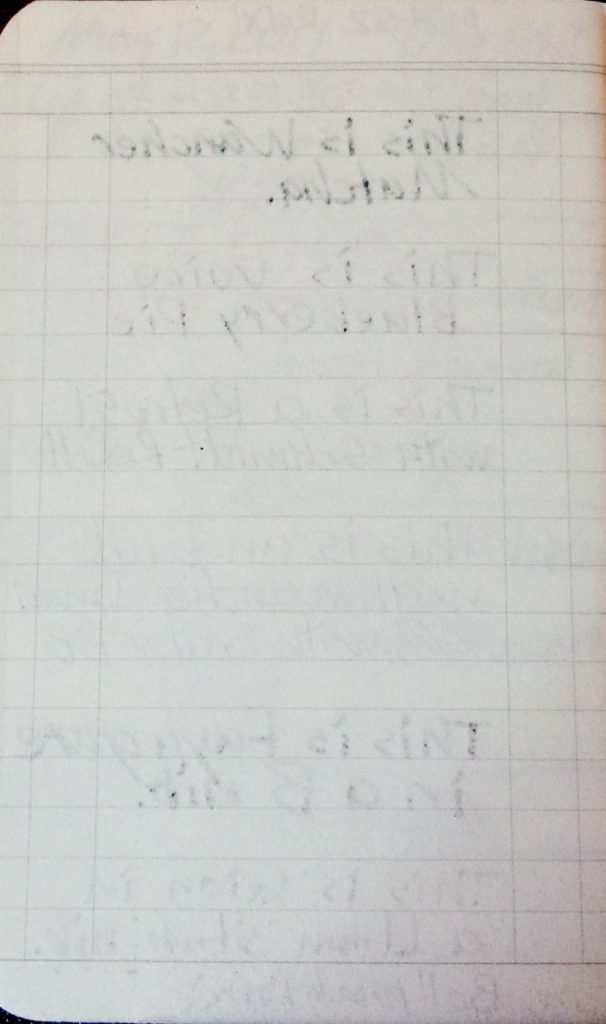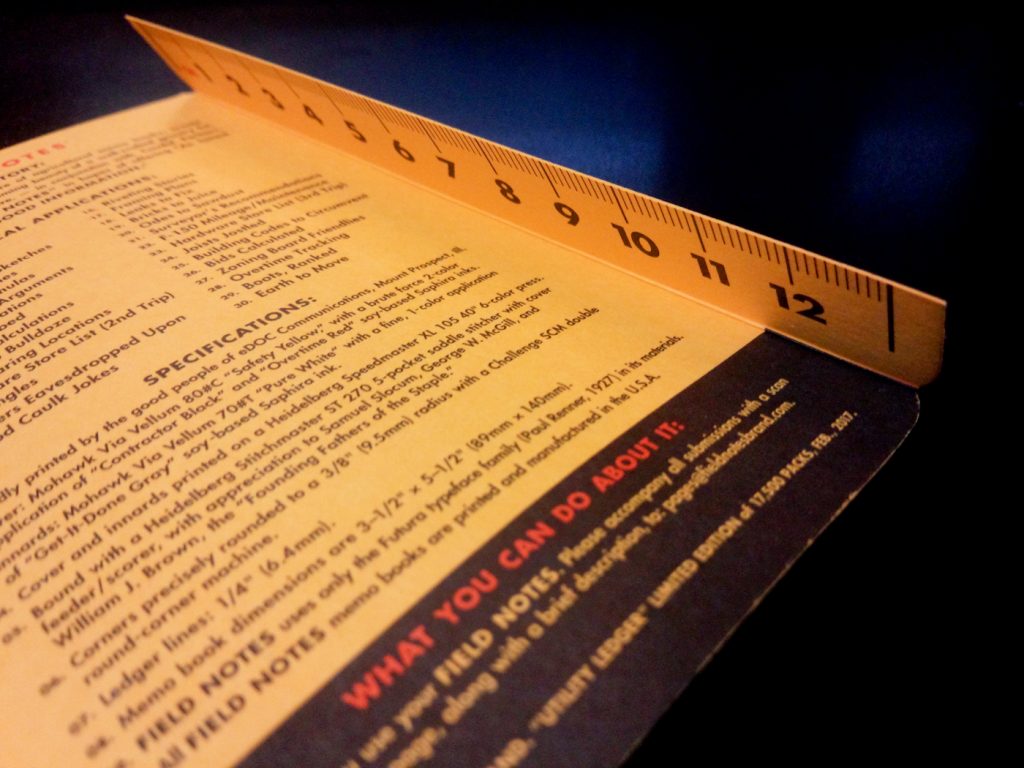Note: Once again I have to thank the kind folks at Pen Chalet for donating this pen. The pen is currently out of stock, but if you’re interested in getting one, you can ask for notifications at this link in case they become available again.
The Monteverde Impressa is an odd pen that may serve as a good first fountain pen, but for reasons that may be out of the ordinary.
In the ten months I’ve used it since my initial impressions, I haven’t had any great technical problems. The nib writes well and I’ve liked using the pen. The cobalt blue and pearl white look attracted a lot of attention in a “Wow, that’s really cool, can I try that” sort of way as opposed to the “That’s sure a big old pen, ain’t it” attention my Shawn Newton Moody often attracts.
The only issues I’ve had have all been cosmetic. The most obvious is that the cobalt finish on the end of the grip section has peeled off.
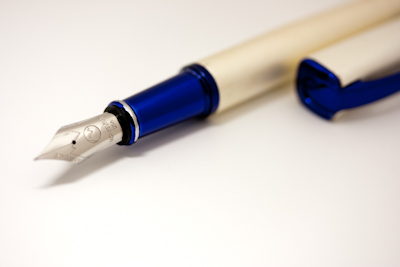
The pen with part of the finish gone.
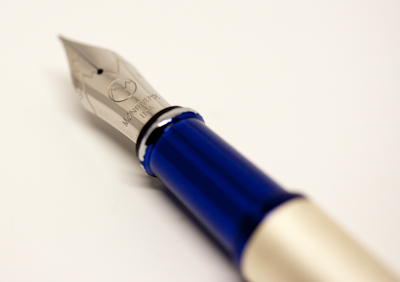
A different angle on the problem.
Also, over time the pearl material on the barrel has developed some odd black scratches.
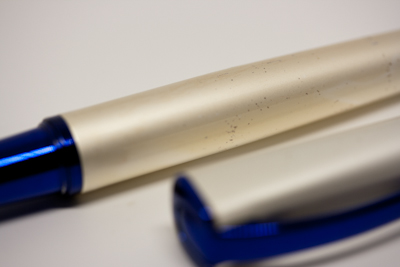
Some of the scratches on the barrel.
This will be off-putting to a lot of true pen addicts, but in an odd way it makes the Impressa a good gateway drug, er, starter pen: 1) It’s inexpensive but doesn’t feel or look cheap. 2) It looks cool and attracts positive attention. 3) It writes well.
However, it’s not a family heirloom kind of pen. A year of solid use will produce chipped sections and scratches. Eventually, the new pen user will become annoyed by the dings and scratches and move on to more expensive pens.
At that point it will be a good pen for testing inks the newly minted addict’s are afraid to try in their more expensive fountain pens.
Second Note: The pictures are sized too small. Sigh. Will fix that another day. –DL

